USA. 2009.
Crew
Director/Screenplay – James Cameron, Producers – James Cameron & Jon Landau, Photography (3-D) – Mauro Fiore, Music – James Horner, Visual Effects – Buf, Blur Studios, Framestore (Supervisors – Jonathan Fawkner & Tim Webber), Hybride (Supervisor – Daniel Leduc), Hy*drau*lx, Industrial Light and Magic (Supervisor – John Knoll), Pixel Liberation Front, Prime Focus (Supervisor – Chris Bond) & Weta Digital (Senior Supervisor – Joe Letteri, Visual Effects Supervisors – Eric Saindon & Guy Williams, Animation Directors – Richard Baneham & Andrew Jones), Character Designs – Stan Winston Studio (Supervisor – John Rosengrant), Performance Capture – Giant Studios, Special Effects Supervisor – Steve Ingram, Production Design – Rick Carter & Robert Stromberg. Production Company – 20th Century Fox/Dune Entertainment/Ingenious Film Partners/Lightstorm Entertainment.
Cast
Sam Worthington (Corporal Jake Sully), Zoe Saldana (Neytiri), Stephen Lang (Colonel Miles Quaritch), Sigourney Weaver (Dr Grace Augustine), Joel David Moore (Norm Spellman), Michelle Rodriguez (Trudy Chacon), Giovanni Ribisi (Parker Selfridge), Laz Alonso (Tsu’tey), C.C.H. Pounder (Mo’at), Wes Studi (Eytucan), Dileep Rao (Dr Max Patel)
Plot
The year 2154. Jake Sully, a marine who has been paralysed from the waist down, is recruited by the military for an assignment to the planet Pandora. Pandora is inhabited by a species of four-metre tall aliens known as the Na’vi. It is also the source of the incredibly valuable mineral unobtanium, but the Na’vi have become hostile to the human presence. Scientists have attempted to blend in with the Na’vi with the use of Avatars – bodies that are a mix of Na’vi and human DNA that a human operates remotely via a neural connection. Jake is asked to replace his twin brother who had trained as an Avatar operator before he was killed, where Jake will be able to use his brother’s Avatar because they share the same DNA. Jake takes to his Avatar form with great relish. However, on his first venture out into the field, Jake is attacked by Pandora’s wild animals and separated from the team. Abandoned in the wild, Jake is saved by a Na’vi girl Neytiri. She is about to kill him when glowing fronds surround Jake and she believes this to be a sign that he is chosen. On the basis of this, Jake is reluctantly accepted into the Omaticaya tribe. The human scientists regard this as a prime opportunity to study the Na’vi, but Colonel Miles Quaritch reminds Jake he is under military orders and instructs him to gain the Na’vi’s trust and survey their territory. Under Neytiri’s tuition, Jake learns the ways of the Na’vi, including how to meld with and fly their creatures. The scientists come to realise that every living thing on Pandora is neurally linked. However, Quaritch and his soldiers are determined to demolish the Omaticaya Hometree, beneath which lies the planet’s richest source of unobtanium. Realising that this means the wholesale slaughter of the Na’vi, Jake takes sides to organise the Na’vi, armed only with bows and arrows, to stand up against the vastly overwhelming might and firepower of the human military.
Most of the press coverage given to Avatar seemed to focus on headlines like “James Cameron, the director of Titanic (1997), makes his return to cinema screens after a twelve-year absence.” Much of this gives the impression of being written by people in their early twenties and what doesn’t come through is just how much James Cameron is a force that has changed the face of modern cinema. Cameron is the father of the modern CGI effects revolution. He was also the person who single-handedly transformed action cinema into something that has become focused increasingly on mass spectacle. Without James Cameron, there would be no Ronald Emmerich, no Michael Bay, no Wachowskis and no Peter Jackson. Well they would be there, but all of the work they have put out in the last decade-and-a-half is only building on the groundwork that Cameron laid down.
After working in various special effects and production design capacities at New World, James Cameron made an inauspicious directorial debut with Piranha II: Flying Killers (1981), before settting the world afire with The Terminator (1984). The Terminator was a B+ budget miracle that became a massive hit and produced a landslide of copycat killer android films, as well as sparked off a great interest in time travel themes throughout the 1980s. Next up for Cameron was the massively successful Aliens (1986), which also produced numerous imitators and is regarded as one of the best science-fiction films of the 1980s. However, the most groundbreaking of Cameron’s films was ironically one of his most troubled and least successful – the underwater alien contact film The Abyss (1989). What was notable about this was one scene where the crew encounter a tentacle made of water – this was one of the very first computer-generated special effects sequences on film and the first to be integrated with live-action. (The Abyss also staked out Cameron’s reputation as someone who would go to enormous lengths in furtherance of his vision and as an exacting task master and control freak who would push casts to the limit of their endurance).
The film that indisputably changed things was Cameron’s subsequent film Terminator 2: Judgment Day (1991), which wowed the world with its novel vision of a liquid metal Terminator. This sparked a major revolution in CGI effects – dozens of digital effects houses popped up overnight and the CGI blockbuster was born. Cameron next went onto make the spy comedy True Lies (1994), which, though enjoyable, remains one of his lesser films and did only modest box-office. Cameron bounced back with Titanic, which was less a film than it was a phenomenon. A massively scaled mixture of weepy romance and special effects spectacular, it became the world’s top grossing film and netted Cameron a Best Director Academy Award (which begat the infamous “I’m the King of the World” speech). From Terminator 2 onwards, Cameron also created a reputation for colossal budgets – Terminator 2 was the first film to top the $100 million budget mark and each of his subsequent films, including Avatar, have been the most expensive films ever made at the time they came out (Titanic, the first film to top the $200 million mark, was even in danger of being shut down by the studio because of its massively out of control budget).
Oddly, since Titanic and becoming the King of the World, the least thing one expected James Cameron to do was … nothing much at all. In the ensuing decade-and-a-half, Cameron gave all appearance of having done a George Lucas and gone into seclusion. He has been around – there have been odd mooted projects like a Mars film in the early 00s but that never amounted to anything concrete, least of all even receiving a title – as well as non-directing work like creating/producing the tv series Dark Angel (2000-2) and producing Steven Soderbergh’s remake of Solaris (2002). Cameron also wrote the script for the long-planned remake of Fantastic Voyage (1966), which Roland Emmerich claims he rejected, while Cameron was edged out of credit for his original script for Spider-Man (2002), written back in the 1980s, through Writer’s Guild arbitration.
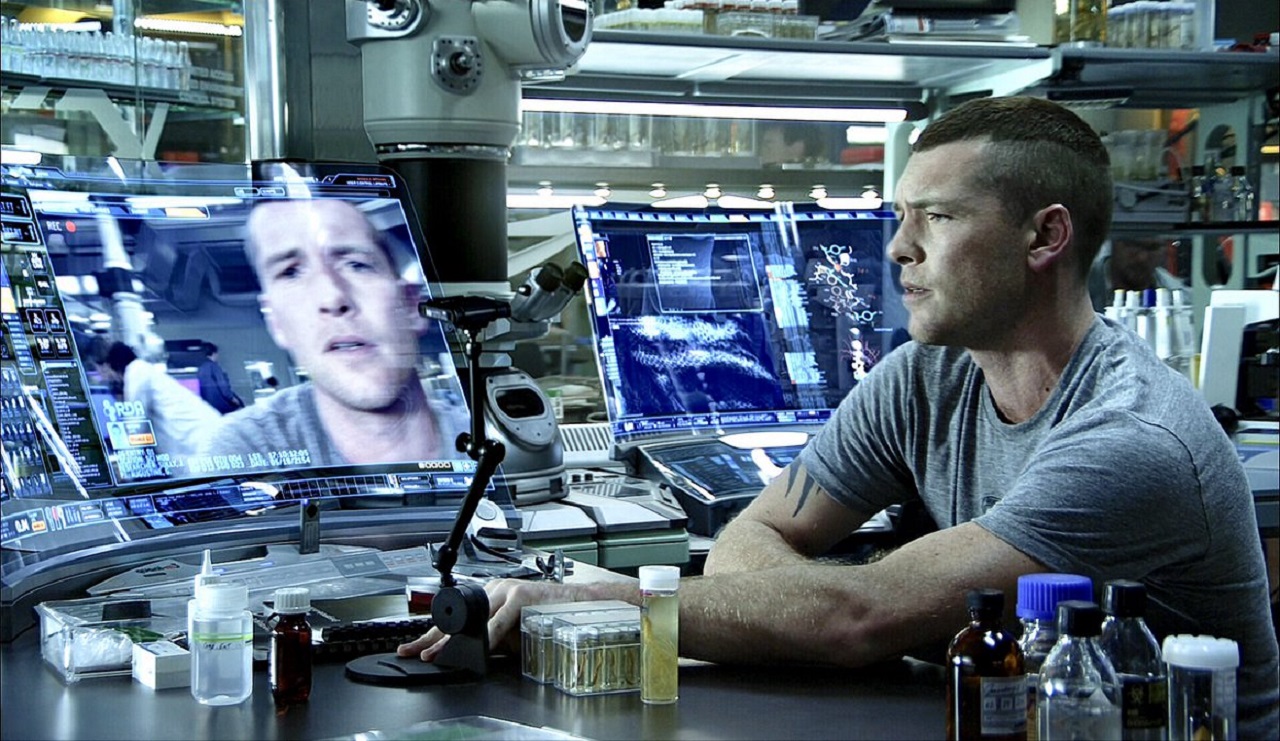
Mostly, Cameron has spent the time indulging his passion – deep-sea diving and exploration – where he has directed several short IMAX 3D documentaries about the underwater environment with Expedition: Bismarck (2002), Ghosts of the Abyss (2003) and Aliens of the Deep (2005), as well as producing other similar shorts like Volcanoes of the Deep (2003), Last Mysteries of the Titanic (2005) and Titanic Adventure (2005). Oh, and there was also the brief venture into Biblical documentary-making as producer/narrator of The Exodus Decoded (2006), which held up archaeological evidence for the Exodus, and the highly contentious The Lost Tomb of Jesus (2007), which tried to argue an archaeologically specious case for the discovery of Jesus Christ’s ossuary.
The reasons for the length of time between Titanic and Avatar seems to be twofold. Cameron originally announced Avatar back in 1991 at the time of Terminator 2. Back then, Cameron’s originally proposed version of Avatar was rejected by studios as being too expensive. Much of the reason for the delay comes down to the stated one that Cameron has given in press interviews – of having to wait for the technology to catch up with being able to deliver his vision. The possibility of making Avatar did not come about until Cameron saw the CGI Gollum in The Lord of the Rings: The Two Towers (2002) and realised that the time had arrived. Indeed, it was purportedly Peter Jackson who personally persuaded Cameron to step back into the director’s chair – as a result, the substantial part of Avatar was shot at Jackson’s Weta effects shop in Wellington. The technology lag still does not explain why Cameron could not have gone onto some other project in the decade in between. The larger problem one suspects that Cameron faced in making his comeback was the daunting question of how does one top a phenomenon like Titanic?
It is great to have James Cameron back on cinema screens. Unlike the similar absence taken by George Lucas between the mid-1980s and the end of the 1990s, Cameron shows he has lost none of the things that made him great. Avatar is an epic in all sense of the meaning. There are all the things that one expects of a James Cameron film – the obsession with technology, both in terms of the hardware we see up on screen and the technology that is driving it behind the cameras. Cameron and his design team create some fabulous machines – vast flotillas of helicopter gunships, massive mining machinery, militarised versions of the power loader in Aliens, a beautiful spaceship with solar sails that opens the film, and all manner of casual technical detail littered in the background.
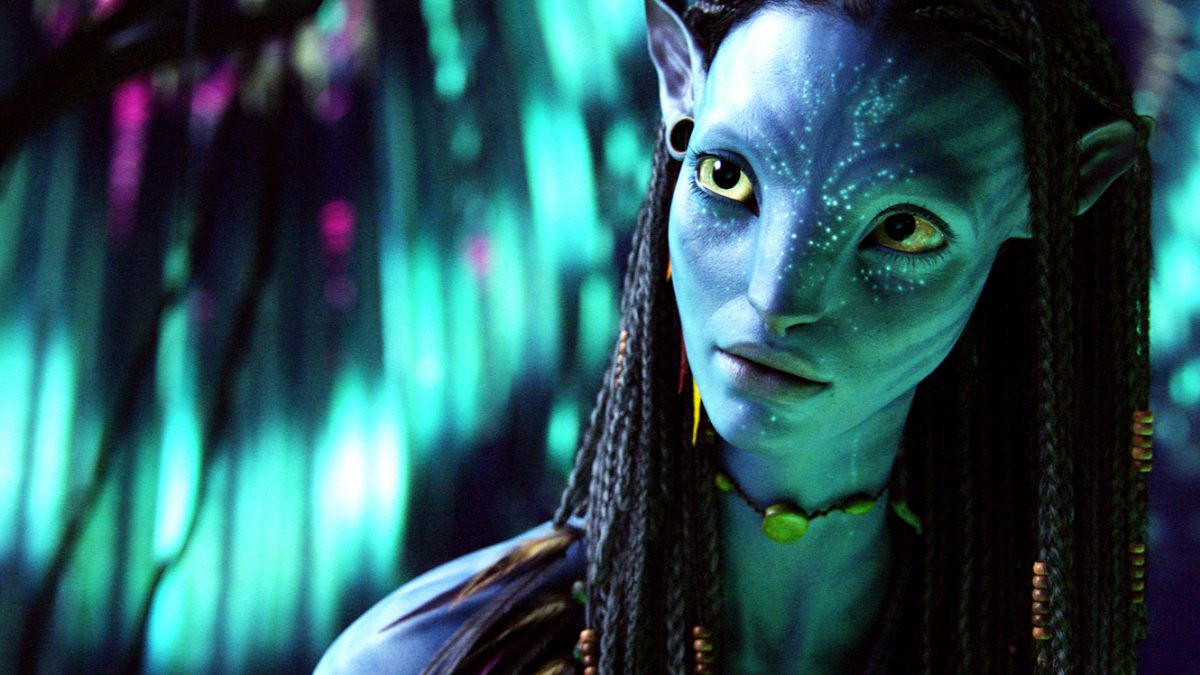
More importantly, Cameron gives us an alien world in the true sense of the meaning. In most science-fiction films and television – the various Star Trek series being particularly guilty offenders – alienness never amounts to anything more than extras with a few facial appliances covering their noses and foreheads. In these there is frustratingly little effort made to conceive of something that is truly alien and goes beyond the standard human-like anthropomorphism. Avatar is not entirely free of that humano-centrism but Cameron makes considerable effort to create an entirely alien-seeming race of aliens – blue-skinned, four metres tall and with a comprehensive culture of their own. And where most conceptions of alien worlds never extends beyond locations that can be found in California state – Star Trek again being a prominent guilty offender – this is an alien world where for once its flora and fauna lives and breathes in stunning detail that has been designed from the ground up. (My only minor quibbles with the conception of the world is that if it is a low gravity environment as it is said, which would logically lead to much taller, thinner natives, the humans never seem to be moving in lighter gravity).
Cameron casually immerses us in the world of the Na’vi, swooping, swimming and diving through an ecosystem that opens up for us like a neon Day-Glo vision of Tarzan’s jungle paradise. The scenes with Sam Worthington being attacked by the Pandoran wild animals, of him leaping through the trees, scaling floating mountains on creepers, all have a visually exhilarating kinesis to them. The sequences where Sam discovers how to ride the ikran hold a wild elation where the 3D camerawork lifts one soaring up alongside at the sheer beauty of the scene.
Like Titanic, Cameron saves his most dazzling set-pieces for later in the film with the toppling of the Hometree. However, this is superseded by the visually stunning climactic scenes with the humans and Na’vi in combat, both on the ground and in the skies, and with Sam Worthington’s avatar and Stephan Lang’s power loader suit in hand-to-hand combat. Unlike most other CGI directors, Cameron successfully conducts a delicate balancing act where he manages to both have the fanboy in one wowing at the spectacle of mass destruction at the same time as one’s heart is wrenching at the devastating loss of life and death of characters. It’s the man who started the revolution in computer-generated effects coming back to show the world he hasn’t been idle or left behind for the last decade and proving conclusively he is still light years ahead of his imitators.
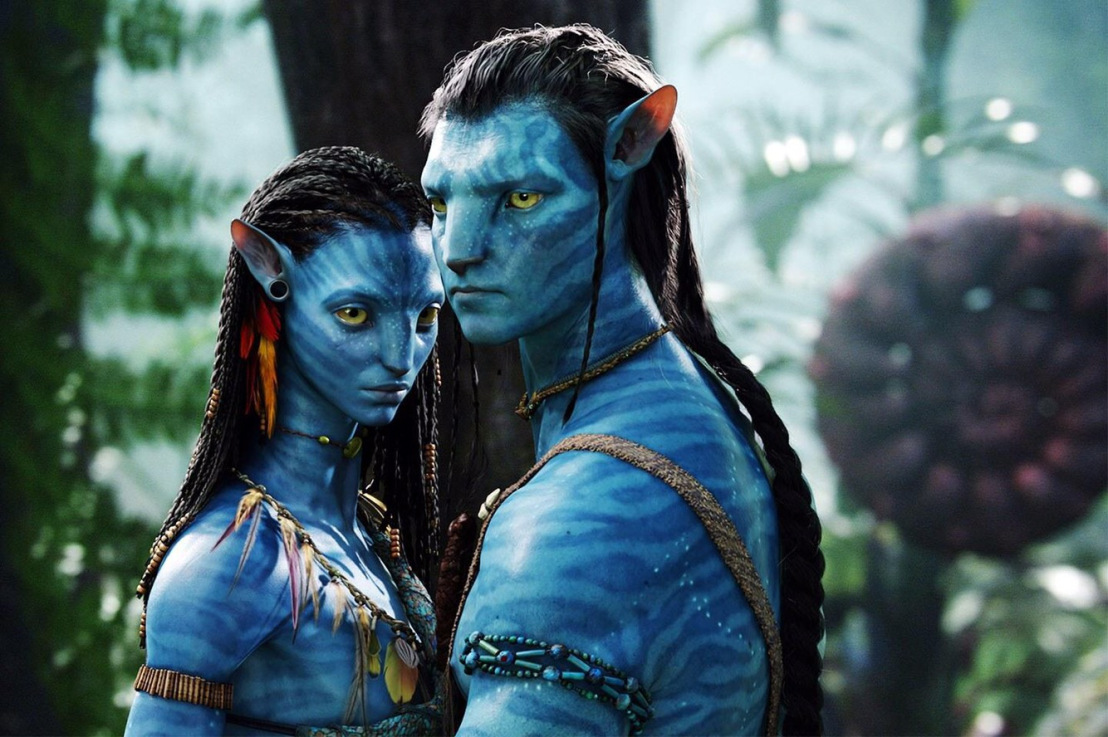
There was a certain degree of panic among studio executives when the first trailer for Avatar went out and started getting sarcastic comments from bloggers about looking like a high-resolution videogame or that the aliens resembled big Smurfs. However, seeing the full film up on screen, surely only the most nitpicking of geeks would complain about the results. That half of the film can be considered to be animated is not ever a question that arises. Unlike some of Robert Zemeckis’s ventures into feature-length performance-capture animation such as Beowulf (2007) and A Christmas Carol (2009), you are never self-consciously reminded that what you are watching is animation. The melding of live-action and motion-captured animation is flawlessly integrated to the point that the dividing line between the two seems irrelevant – this is maybe the first animated film where the audience doesn’t even consider they are watching animation.
For all the triumphant hymns to technology he constructs in his films, James Cameron is constantly seeking a human heart inside the hurtling juggernauts we see up on screen. Throughout works like The Abyss and Terminator 2 run the constant themes that protagonists must look beyond technology and seek their essential humanity. Avatar takes this furthest of any Cameron films so far. Despite being the biggest technology-driven film of the year, the irony of Avatar is that the end triumph its good guys reach lies in abandoning technology altogether and opting for a pantheist mysticism in harmony with nature.
It is worth comparing James Cameron to author Michael Crichton. Both cover very similar territory – Crichton similarly loved the display of cutting edge technology and filled his books with a density of detail that showed he had done his research. However, when it came to humanity, Crichton was a pessimist, there were no triumphs of the human in his book – except in a desultory plot-turning denouement kind of way – and his stories regularly featured stories about problems caused by human greed, stupidity or overlooked design flaws in the technology. By contrast, Cameron covers the same general territory but is far more of an optimist. Cameron and Crichton’s work has a number of parallels – where Crichton made Westworld (1973) about androids going amok, Cameron made The Terminator films, although Westworld is lacking Cameron’s ardently found triumph of the human over the machine. Where Cameron made The Abyss, Crichton wrote the almost identical Sphere (1987), later filmed as Sphere (1988). Both are films about the crew of an underwater habitat encountering alien lifeforms and vehicles on the ocean floor – for Crichton, this was something that amplified the worst human fears and we were better off without the wonders it might hold; for Cameron, it was about travelling beyond fears of the unknown to a transcendent communion and eventual message of world peace.
It is also worth comparing Avatar with Michael Crichton’s novel State of Play (2004). Though the plots and subject matter are vastly different, both deal with the big contemporary issue of the environment. Where Crichton concluded that Global Warming was a fraud perpetuated by a Greenpeace-like organisation, Cameron at completely opposite remove has his heroes switching off their technology and becoming back-to-nature tree-huggers communing with the environment. Indeed, it may be that beneath the wondrous array of CGI on display in Avatar, James Cameron has just produced the most expensive environmental advocacy commercial ever made.
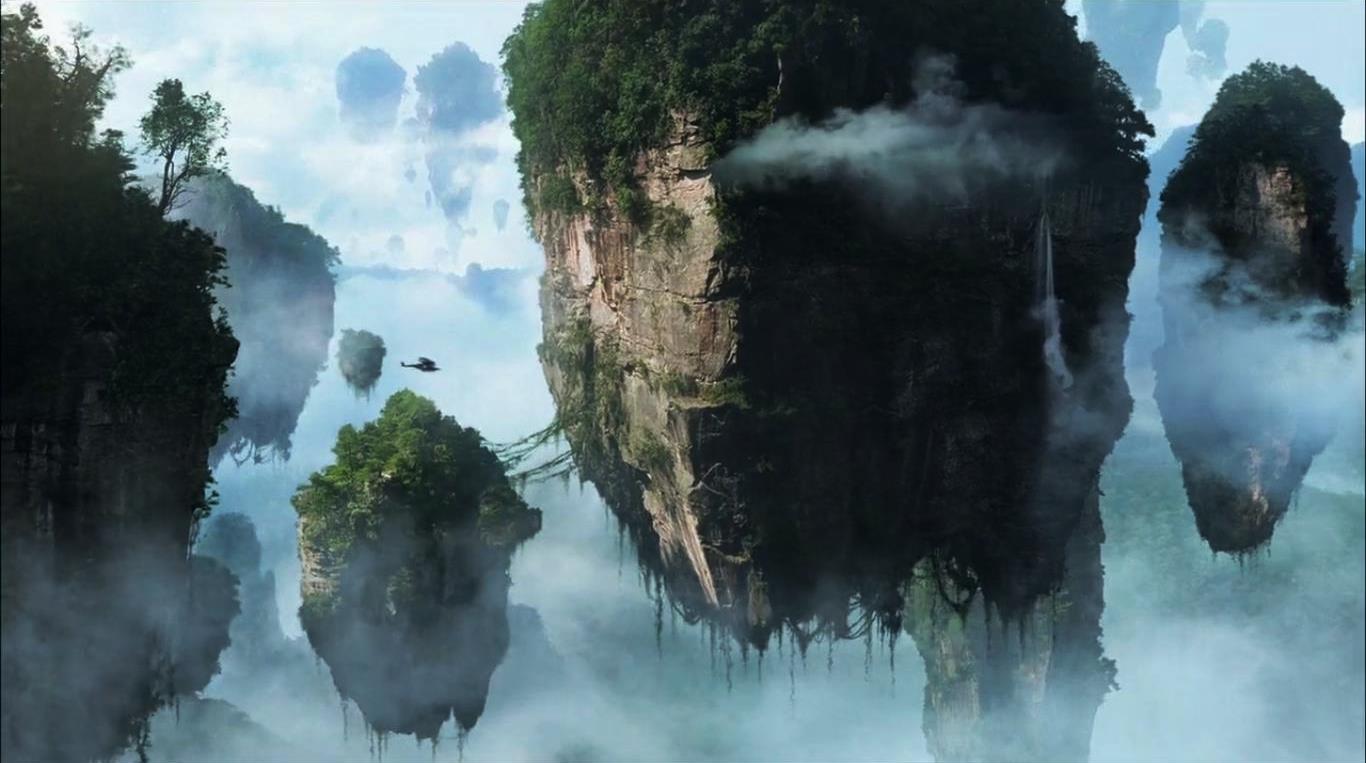
There is also undeniable similarity between Avatar and Surrogates (2009), which came out three months earlier the same year. Both films feature futures where it is accepted practice for people to use neural amplifiers that allow them to remotely inhabit artificial bodies. In both films, the world of these avatar bodies has a wondrousness that comes to surpass the mundane reality of ordinary people living in aging or crippled bodies. On the other hand, both films are also wildly different in what they conclude about these avatars. For Surrogates, the practice is not ‘real’ and Bruce Willis’s hero little more than a grumpy old man who brings the entire system down because he does not like the artificiality it represents. By contrast, James Cameron goes completely the other way and sees the virtual avatars as a means whereby humans can reconnect with nature. This is somewhat ironic considering that the film’s emphasis is the abandonment of technology, although Cameron plays up the disparity with Sam Worthington’s attempts to lead the Na’vi resistance constantly being thwarted as the military are trying to drag him out of the avatar chamber or smash it apart.
Mostly, it feels like Cameron has borrowed the plot for Avatar from the modern revisionist American Indian drama. Avatar could fairly much be considered (at least on a plot level) to be Dances With Wolves (1990) – but where the Indians are played by giant blue aliens who fly lizards instead of ride horses. In both stories, there is the character of a white man who comes from an oppressive colonial culture who goes native and is reluctantly accepted into the tribal culture where he comes to master its warrior ways and then eventually leads the fight back against the white people as they attempt to move in with genocidal regard. In both films, there is also the character of a native woman that the hero bonds with and of the lead native brave who bristles with hostility at the hero’s increasing proficiency in the ways of war before they both realise they are on the same side and unite against the common enemy. The parallels to Dances With Wolves even extend to having the hero of both at the outset facing the prospect of life without the use of his legs before rediscovering himself on the frontier world. Although more than anything, the single work that James Cameron owes his debt of inspiration to is Ursula Le Guin’s novel The Word for World is Forest (1976), which, minus the avatar angle, concerns the ruthless attempts of human colonists to demolish a forest in which a group of alien natives have bonded with the environment and share a connection (dreaming in the book) that the colonists fail to understand.
Certainly, Cameron is not above making parallels to modern military. In fact, Avatar is perhaps one of the strongest anti-military films made in some time. Stephen Lang’s colonel is made into a villain of the least redeemable order – the role makes amusing contrast to Lang’s turn as a military officer in The Men Who Stare at Goats (2009), which came out one month earlier. All of this is a considerable turnaround for Cameron who has in the past seemed like someone who has gotten off on military hardware and bustle – this is after all the man who wrote the script for Rambo: First Blood Part II (1985) and directed-wrote Aliens, which has become the film that military SF junkies get themselves off to. Mindedly, Cameron’s work from The Abyss through Terminator 2 has become an increasingly pacifist one, with Cameron being particularly outspoken against the nuclear arms race throughout these. The scenes with the military here could be effortlessly merged with the ones of the marines in Aliens – indeed, Michelle Rodriguez’s pilot character seems like an attempt on Cameron’s part to rehash the character of Jenette Goldstein’s Vasquez – but their portrayal here is almost as opposite extremes to Aliens, where the everyday grunt heroes there have now become genocidal killers.
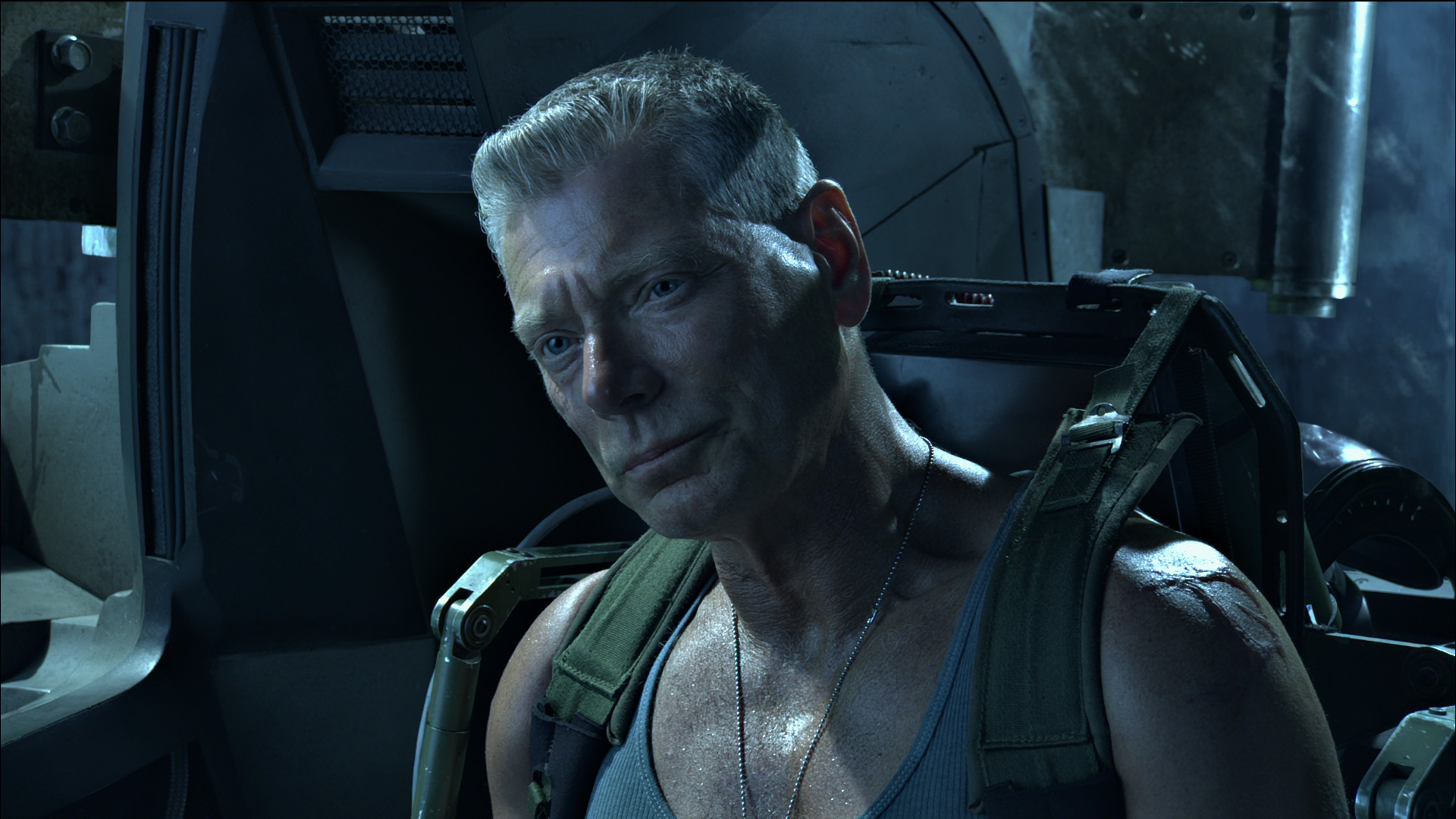
Cameron’s implied critique throughout Avatar is of the frequent sense to which the military is employed to bolster up economic imperative as was the case in much of the British Empire and during the colonisation of the Indians in North America, not to mention the two Gulf Wars. Cameron only too clearly sees modern parallels with Iraq, co-opting the Iraq War buzzword of “Shock and Awe” at one point. In seeing Avatar in more modern terms, Cameron’s sympathy and point-of-view becomes a surprisingly radical one. If you read Avatar in terms of analogy to the Iraq War, you have to conclude that Cameron’s sympathies are entirely with the Iraqis and wholly in empathy with the freedom fighters conducting suicide bombings and low-tech guerrilla-styled insurgency movements against the military occupation.
While most American audiences have switched off at films that tackle issues of the Iraq War head on, Cameron has subversively gotten away with this simply by doing the old Star Trek (1966-9) standby of recasting the issue with alien faces and setting it on another planet. In so doing, he has produced a far more ardently outspoken anti-war work than all of the Fahrenheit 9/11 (2004)’s and their imitators put together. It is an amazingly subversive touch for a film that was one of the top box-office hits of 2009 and subsequently the No 1 hit of all time. Not to mention for someone like Cameron to have snuck such out the front door of 20th Century Fox past Rupert Murdoch and the same studio that produces the Fox New Channel.
Avatar was nominated for Best Picture and James Cameron for Best Director at that year’s Academy Awards, receiving wins for Best Cinematography, Best Music and Best Visual Effects.
James Cameron has announced four Avatar sequels for the 2020s. The first of these to be released was Avatar: The Way of Water (2022), followed by Avatar: Fire and Ash (2025). Avatar was parodied in The Starving Games (2013).
James Cameron has also written the millennial virtual reality film Strange Days (1995), which was directed by his ex-wife Kathryn Bigelow, and wrote/produced the manga adaptation Alita: Battle Angel (2019) and Terminator: Dark Fate (2019), as well as produced the near future tv series Dark Angel (2000-2), the remake of Solaris (2002), the rock diving survival film Sanctum (2011) and Cirque du Soleil: Worlds Away (2012). He also hosted and produced the tv documentary series AMC Visionaries: James Cameron’s The Story of Science Fiction (2018).
(Winner for Best Film in this site’s Top 10 Films of 2009 list. Winner for Best Director (James Cameron) and Best Special Effects, Nominee for Best Original Screenplay, Best Supporting Actress (Sigourney Weaver) and Best Production Design at this site’s Best of 2009 Awards).
Trailer here

